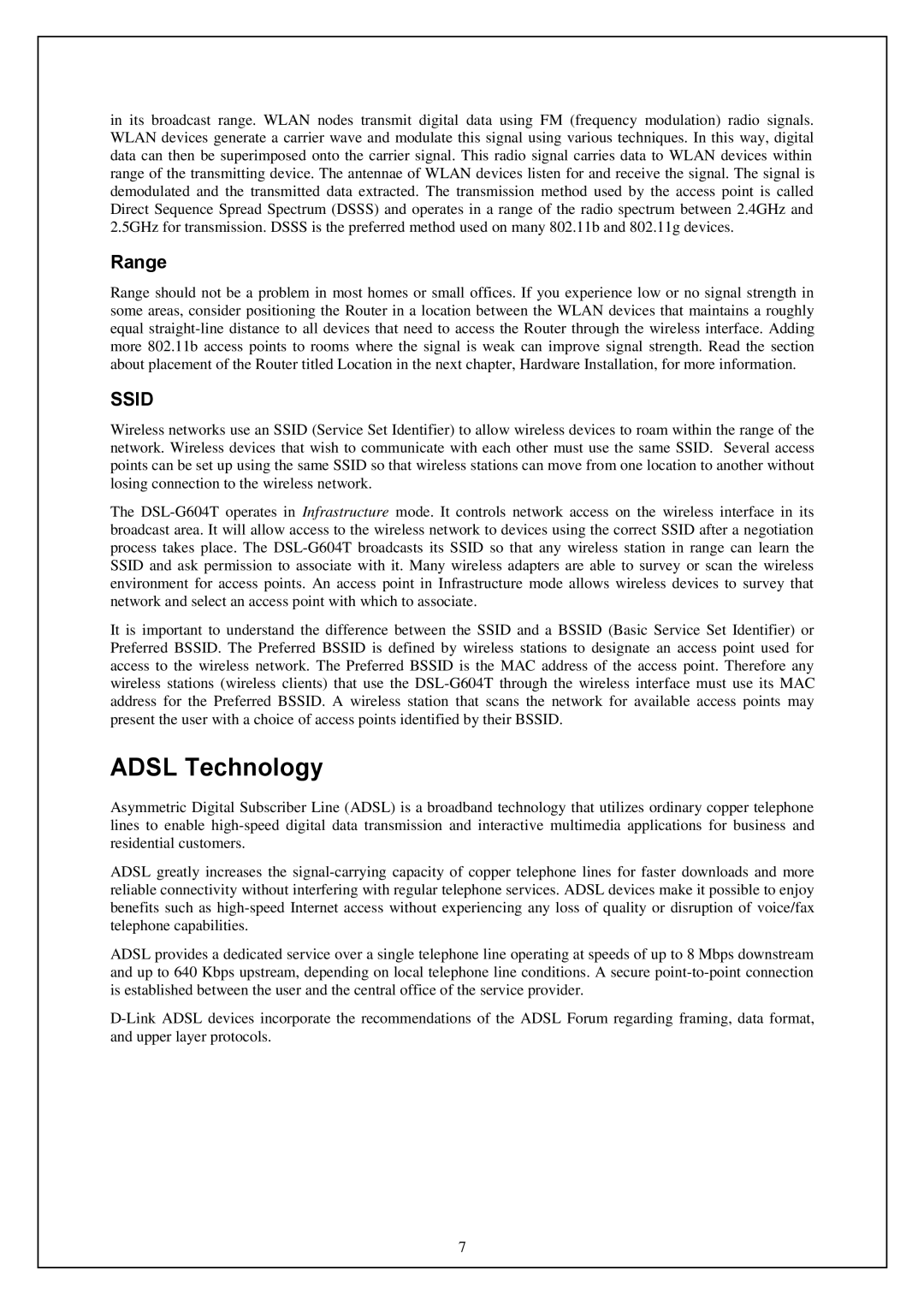
in its broadcast range. WLAN nodes transmit digital data using FM (frequency modulation) radio signals. WLAN devices generate a carrier wave and modulate this signal using various techniques. In this way, digital data can then be superimposed onto the carrier signal. This radio signal carries data to WLAN devices within range of the transmitting device. The antennae of WLAN devices listen for and receive the signal. The signal is demodulated and the transmitted data extracted. The transmission method used by the access point is called Direct Sequence Spread Spectrum (DSSS) and operates in a range of the radio spectrum between 2.4GHz and 2.5GHz for transmission. DSSS is the preferred method used on many 802.11b and 802.11g devices.
Range
Range should not be a problem in most homes or small offices. If you experience low or no signal strength in some areas, consider positioning the Router in a location between the WLAN devices that maintains a roughly equal
SSID
Wireless networks use an SSID (Service Set Identifier) to allow wireless devices to roam within the range of the network. Wireless devices that wish to communicate with each other must use the same SSID. Several access points can be set up using the same SSID so that wireless stations can move from one location to another without losing connection to the wireless network.
The
It is important to understand the difference between the SSID and a BSSID (Basic Service Set Identifier) or Preferred BSSID. The Preferred BSSID is defined by wireless stations to designate an access point used for access to the wireless network. The Preferred BSSID is the MAC address of the access point. Therefore any wireless stations (wireless clients) that use the
ADSL Technology
Asymmetric Digital Subscriber Line (ADSL) is a broadband technology that utilizes ordinary copper telephone lines to enable
ADSL greatly increases the
ADSL provides a dedicated service over a single telephone line operating at speeds of up to 8 Mbps downstream and up to 640 Kbps upstream, depending on local telephone line conditions. A secure
7
